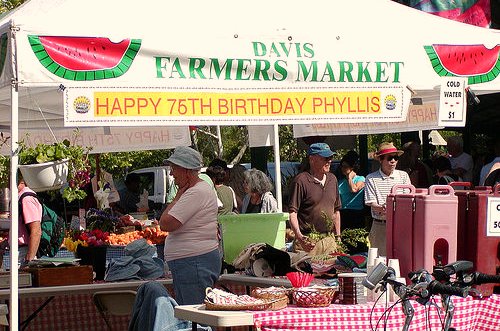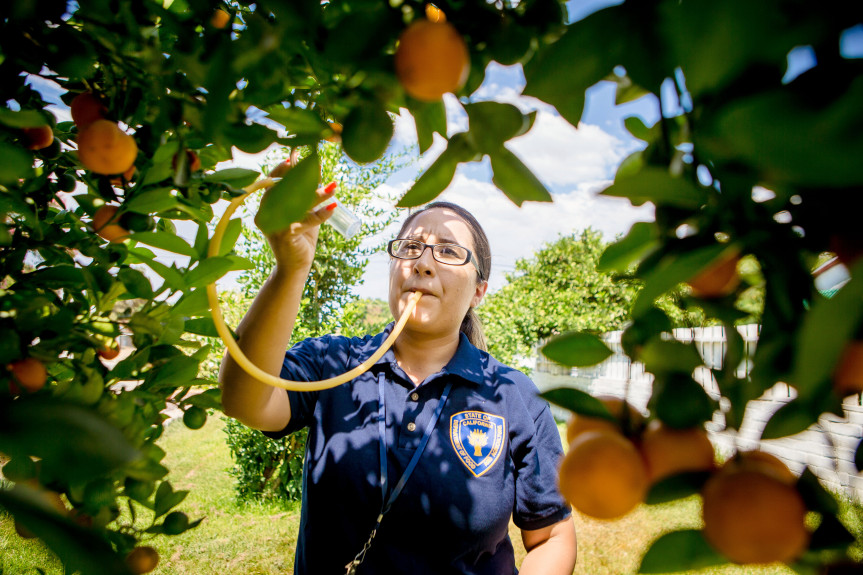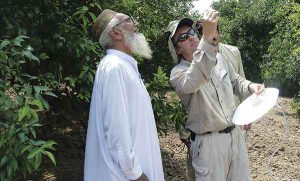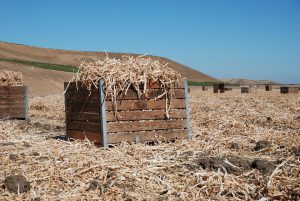For 48 hours, innovators and entrepreneurs at the Apps for Ag Hackathon labored over laptops at The Urban Hive in Sacramento before pitching their ideas to judges at the California State Fair. More than 40 people, some from as far as New York and Texas, competed for a $10,000 grand prize and assistance from UC Agriculture and Natural Resources to turn their ideas into commercial enterprises.
Ultimately “Dr. Green,” a mobile app to diagnose plant problems, took the top prize on Sunday (July 30). The second-place Greener app also helps people diagnose and treat plant diseases. Farm Table, an app that promotes agritourism, came in third place.
One goal of the hackathon was to produce solutions for military veterans who are becoming farmers. The U.S. Department of Veterans Affairs was a major sponsor of the event and leaders from Washington D.C. were on site all weekend participating.
“There was an amazing range of applications this year,” said Gabriel Youtsey, chief innovation officer for University of California Agriculture and Natural Resources, which hosted the hackathon.
Twelve teams pitched new ways to apply technology to improve the food system.
“There was an application to take a picture of a plant and it’ll identify the plant disease – which can help anyone from backyard gardeners to professional growers – all the way to an application for community-supported fisheries, which helps fishermen better scale their businesses and allows for customers to get the freshest fish,” Youtsey said.
There was an app to match unemployed veterans with farm jobs, an online resource for bees, an app to simplify shipping logistics, an app for detecting mold on produce and many more solutions for food-related problems.
1st Place: Dr. Green
Figuring out why a plant is ailing can be time-consuming for a new farmer or backyard gardener. The plant doctor is always in with Dr. Green. The app created by Sreejumon Kundilepurayil and Vidya Kannoly of Pleasanton will help people identify crop diseases quickly through artificial intelligence and machine learning. The app can incorporate data from sensors monitoring temperature, light and soil moisture to alert growers to problems. Using a smart phone, backyard gardeners and growers can take a photo of plant symptoms and get a diagnosis or use the messaging feature to ask a question about symptoms and receive advice immediately.
Kundilepurayil and Kannoly won $10,000 and tickets to the UC Davis Food and Ag Entrepreneurship Academy, $3,000 worth of Google Cloud Platform credits, plus other resources to help the team start their venture.
2nd Place: Greener
Using a smart phone, home gardeners can take a photo of plant symptoms and quickly get a diagnosis and recommended IPM treatment from the Greener app, created by Scott Kirkland, John Knoll and Shiang-Wan Chin of Davis and Calvin Doval of Oakland. They won $5,000 and $1,000 worth of Google Cloud Platform credits and other resources to help start their venture.
3rd Place: The Farm Table
The Farm Table app aims to make farms more economically sustainable and educate the public about food through agritourism. Heather Lee of San Francisco teamed up with Will Mitchell of Sacramento and Zhenting Zhou of New York City to create the agritourism app.
“We are making agritourism accessible to farmers by building a platform that’s connecting visitors with farms,” said Lee. “This is going to help educate our communities on where their food comes from and create an additional revenue source for farmers.”
They won $2,500 and $1,000 worth of Google Cloud Platform credits and other resources to help start their venture.
Growing the pipeline of young innovators
Judges included Joshua Tuscher of the U.S. Department of Veterans Affairs; Robert Trice, investor and founder of The Mixing Bowl Hub; Jenna Rodriguez, product manager at Ceres Imaging; Ann Dunkin, chief information officer for the County of Santa Clara; and Jessica Smith, vice president of Strategic Partnerships at AngelHack.
Apps for Ag is a food and agriculture innovation event series hosted by University of California Agriculture and Natural Resources (UCANR) and sponsored by IO Labs, The Urban Hive, California Community Colleges and the California State Fair.
“We’re growing the pipeline of young innovators, getting entrepreneurs and technologists interested in applying technology to solving problems in the food system,” said Youtsey, who led organization of the hackathon.
“UC ANR is the original innovation engine in food, agriculture and natural resources in California and has been so for over 100 years. This is just taking another spin at tackling innovation in food and agriculture through an innovative competition style format with technology,” he said.
Additional support for the hackathon was provided by Valley Vision, The Mixing Bowl, Farmer Veteran Coalition, AngelHack, Nutiva, Google Cloud Platform, Royse Law Firm, Hot Italian, GTS Kombucha, Startup Sac, AgStart, StartupGrind Sacramento, Future Food, Internet Society San Francisco Bay Chapter, Sacramento Food Co-op, Balsamiq and YouNoodle.












